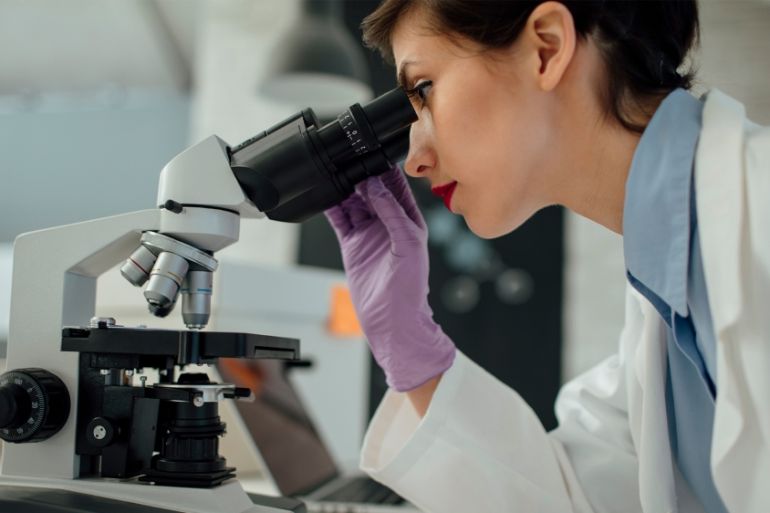Doctor’s Note: Can the coronavirus reactivate?
New research suggests the coronavirus may be able to lie dormant and later ‘reawaken’. A doctor examines the evidence.

New data from the Korean Centre for Disease Control and Prevention (KCDC) has thrown up a new theory about how we build immunity to coronavirus.
The KCDC stated last week that there have been 91 documented cases of patients in Daegu, South Korea who had recovered from the coronavirus, left quarantine, and then tested positive again.
Recommended Stories
list of 4 items- list 1 of 4Doctor’s Note: How to stay healthy during lockdown
- list 2 of 4Doctor’s Note: How to manage your asthma during coronavirus
- list 3 of 4Doctor’s Note: Can coronavirus cause permanent damage?
- list 4 of 4Doctor’s Note: Can you boost your immune system?
The policy in South Korea is that you must test negative twice with a 24-hour interval in order to be considered “fully recovered” and discharged from quarantine.
KCDC director-general, Jeong Eun-kyeong, stated they would be investigating this further to determine if these results were down to an issue with testing, but was quoted as saying that he thought it was due to “reactivation” of the virus, rather than reinfection.
From the knowledge that we have about other coronaviruses, we are aware that immunity to such viruses can be variable.
Antibodies we form against the common cold, for example, which is also caused by a coronavirus, do not offer lifelong immunity from this virus. As the US’s Center for Disease Control and Prevention (CDC), has stated, adults on average catch two to three colds a year.
Research on the Middle Eastern Respiratory Syndrome (MERS) virus has shown that immunity wanes after around 18 months and we build an average of two years’ immunity to the Severe Acute Respiratory Syndrome (SARS) coronavirus, which seems to have the most in common, genetically speaking, with COVID-19.
From what has been observed about COVID-19 so far, researchers suspect that we will have at least a “short-term” immunity, so that you will be unlikely to catch it again this season.
A scientific research team based in China released a preliminary report looking at two rhesus macaques that had recovered from COVID-19 and were not reinfected when researchers exposed them to the virus for a second time, four weeks after their initial exposure.
The aim is to then extrapolate this to humans to see if they react in the same way when they have been potentially exposed to COVID-19 multiple times.
There had been some reports of patients testing positive for coronavirus soon after discharge, despite having recovered from the initial infection.
Researchers suspect that, rather than these people having been reinfected, there may have been flaws in the testing process whereby low levels of the virus failed to be picked up when patients were discharged from the hospital.
Other studies suggested that people may still test positive long after recovery. So, while it cannot be entirely ruled out that you could catch coronavirus twice in one season, at present, it appears unlikely.
However, this latest data from the KCDC has thrown a new theory into the mix – that the virus can become dormant and, later, reactivate itself.
While our immune system is able to clear most pathogens, there are, indeed, some that lie dormant – “hidden” in our cells, not causing any illness.
The mechanism of reactivation occurs when that pathogen comes out of its sleeping phase and becomes active again, potentially replicating and spreading, causing illness.
There are quite a few viruses that behave like this. For example, a very common one is varicella-zoster, which is the virus responsible for chickenpox.
Nearly all children in the UK catch chickenpox by the age of 10, and it is considered a fairly benign virus for most. However, once you have cleared chickenpox, it remains inactive in your nerve tissue, and in one in three adults it reactivates to cause shingles, a condition resulting in a painful rash.
While we cannot rule out reactivation as a possibility yet, it still seems more probable that these 91 cases were either due to the levels of the virus dipping below a detectable level, allowing symptoms to improve, but then surging again, or that there were flaws with the tests, where the clearance samples were false negatives. The tests are not perfect and, from the data received from China, the most commonly used type of test showed up to a 30 percent false-negative rate.
As South Korea investigates this further and other countries are able to offer their own findings, we are likely to understand more about the way this virus summons an immune response and, hopefully, determine for sure whether reactivation or reinfection are possibilities.
